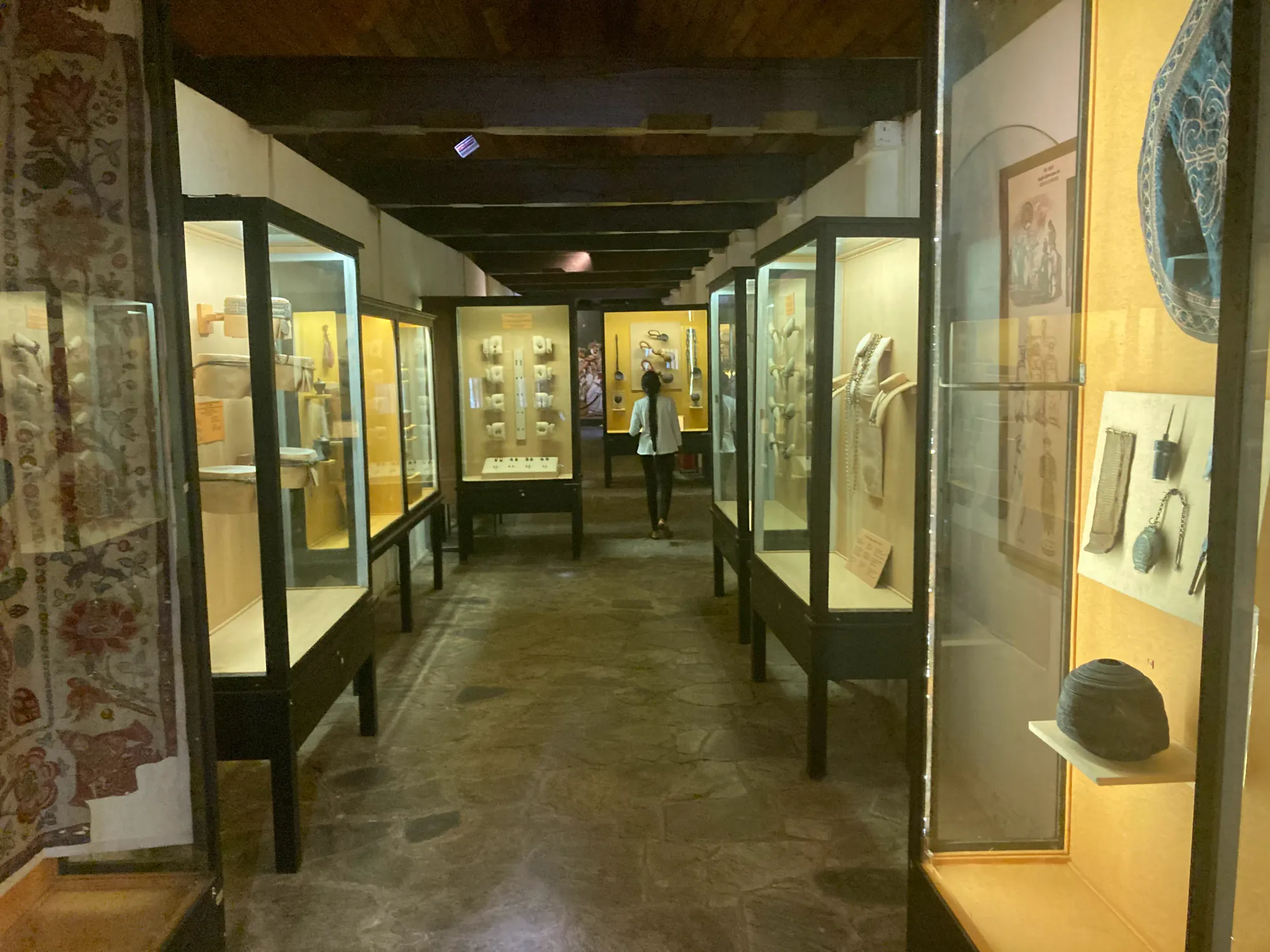
National Museum of Kandy
Located in the heart of Kandy, the National Museum of Kandy is one of the most informative cultural institutions in the country. Whether you're a history enthusiast or a casual traveler, the museum offers an engaging experience that helps you connect with Sri Lanka's rich past. This travel guide aims to provide you with essential information about this fascinating museum.
Overview of the Museum
The National Museum of Kandy is a major cultural institution located in the city of Kandy. Serving as an educational platform, the museum focuses on the Kandyan period of Sri Lanka's history, which spans from the 17th to the 19th centuries. Here, you can admire a wide range of artifacts, including traditional tools, textiles, and handicrafts, that offer insights into this significant era.
Housed in the Palle Vahala building, the museum is an example of architectural significance. This structure was built in 1840 and blends traditional Sri Lankan and colonial elements. Made primarily of wood and bricks, the building has two floors featuring a main hall and several adjoining rooms. The intricate wooden carvings that adorn the windows, doors, and roofs highlight the craftsmanship of artisans from the Kandyan period. The architecture serves as a complement to the exhibits, enhancing the overall experience of understanding the Kandyan culture.
History of the National Museum of Kandy
The history of the Kandy National Museum can't be discussed without first mentioning the Palle Vahala building, which was originally built in 1840 as a royal residence. Specifically, this building served as the abode for the queens of King Sri Vikrama Rajasinha, the last ruling monarch of the Kingdom of Kandy. The Kandyan Kingdom was the last independent kingdom in Sri Lanka and was significant for resisting colonial rule for several centuries before finally succumbing to the British in 1815.
The Palle Vahala building later served various functions after the fall of the Kandyan Kingdom. In the colonial period, it was used as an administrative office by British officials. However, recognizing its historical and cultural importance, the building was converted into a museum in 1942.
The establishment of the museum was a significant move to safeguard the cultural heritage of Sri Lanka, particularly the Kandyan era. It was aimed at educating the public about the Kandyan Kingdom's rich history, art, and architecture. The Kandy National Museum now operates under the Department of National Museums and is one of the premier museums in the country dedicated to the Kandyan period.
Through the years, the museum has undertaken various renovation and conservation projects to maintain the quality and integrity of the exhibits. Its collection has also expanded to include more artifacts that cover a broad spectrum of the Kandyan culture, from royal attire and weaponry to art and crafts.
Sections and Exhibits Halls
The National Museum of Kandy is divided into 8 separate halls. Hall 3 has no exhibits and serves as a lecture hall. The remaining 7 halls, each specialize in a different aspect of Kandyan culture and history.
Detailed descriptions and placards in both English and Sinhalese accompany the exhibits, making it easier for visitors to understand the significance of the items on display. Here is a more in-depth look at each hall:
Hall 1 and 2 : Royal Ornaments and Dresses
These 2 halls showcase traditional Royal attire from the Kandyan period. You can observe the various clothing, jewelry, personal weapons and accessories of the Kandyan Royalty. Apart from royalty, this section also features attire of prominent individuals of the Kandyan era like the national hero, Keppetipola Adigar. You can also see the traditional dresses and ornaments of the Kandyan period.
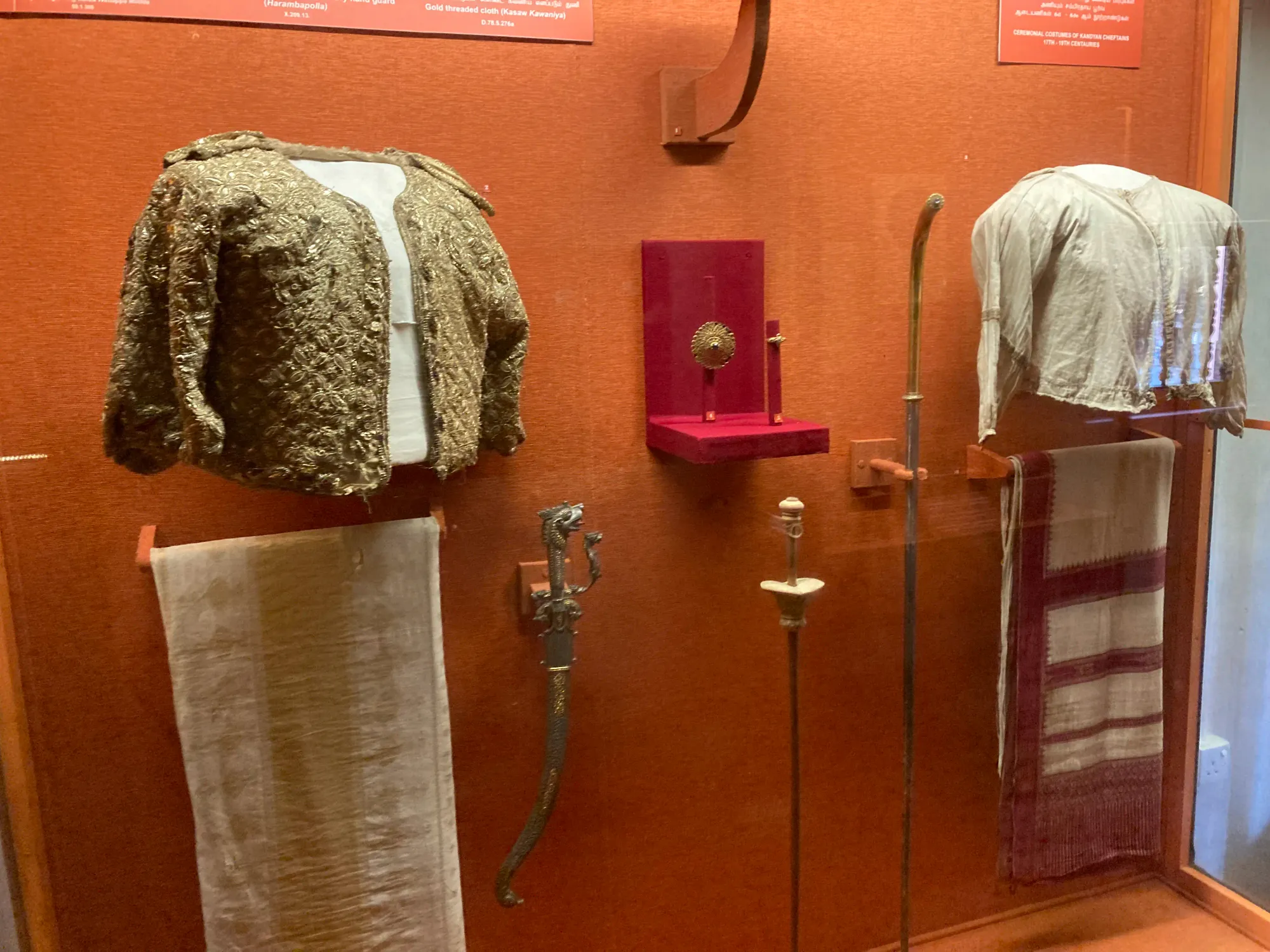
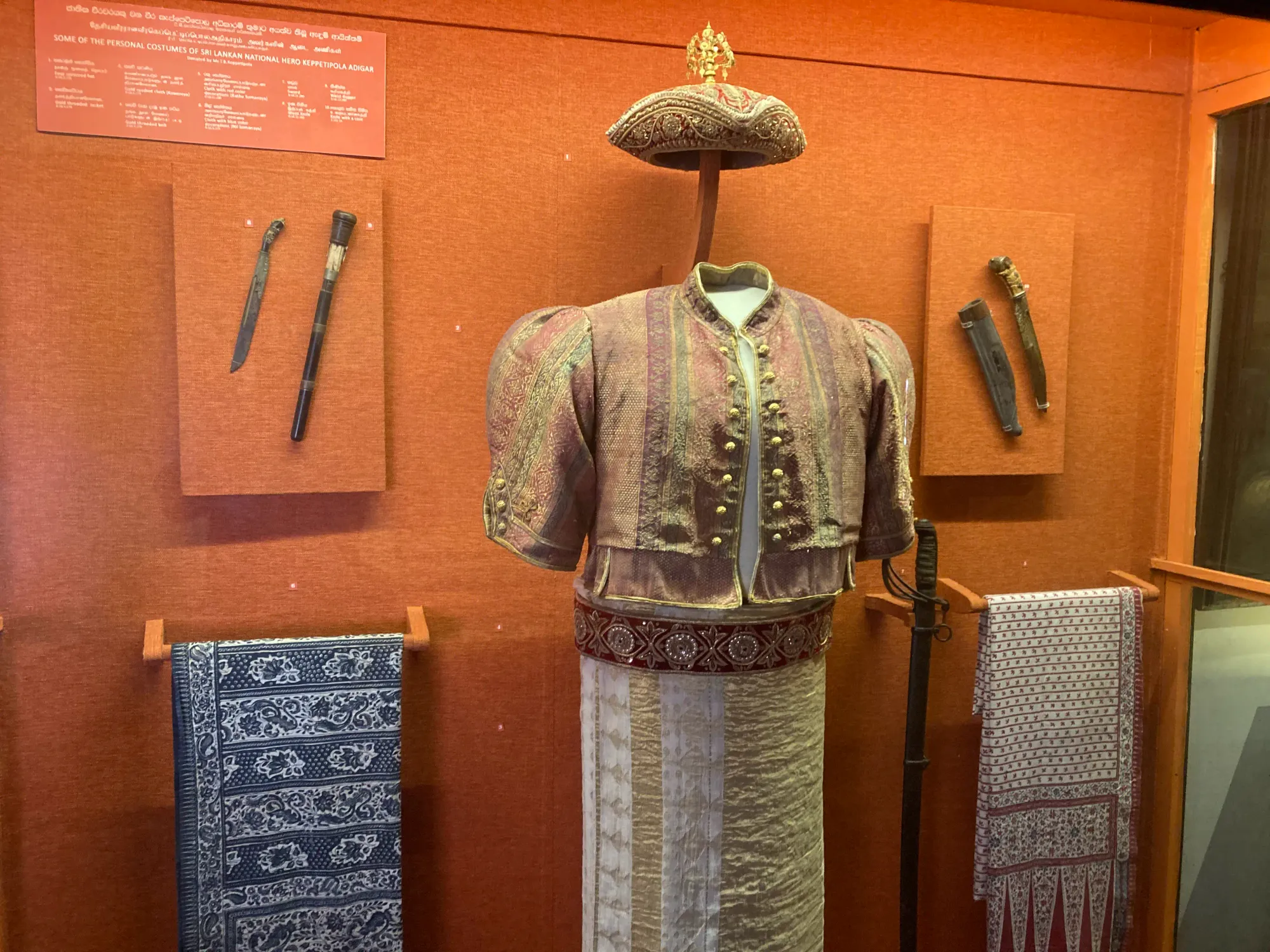
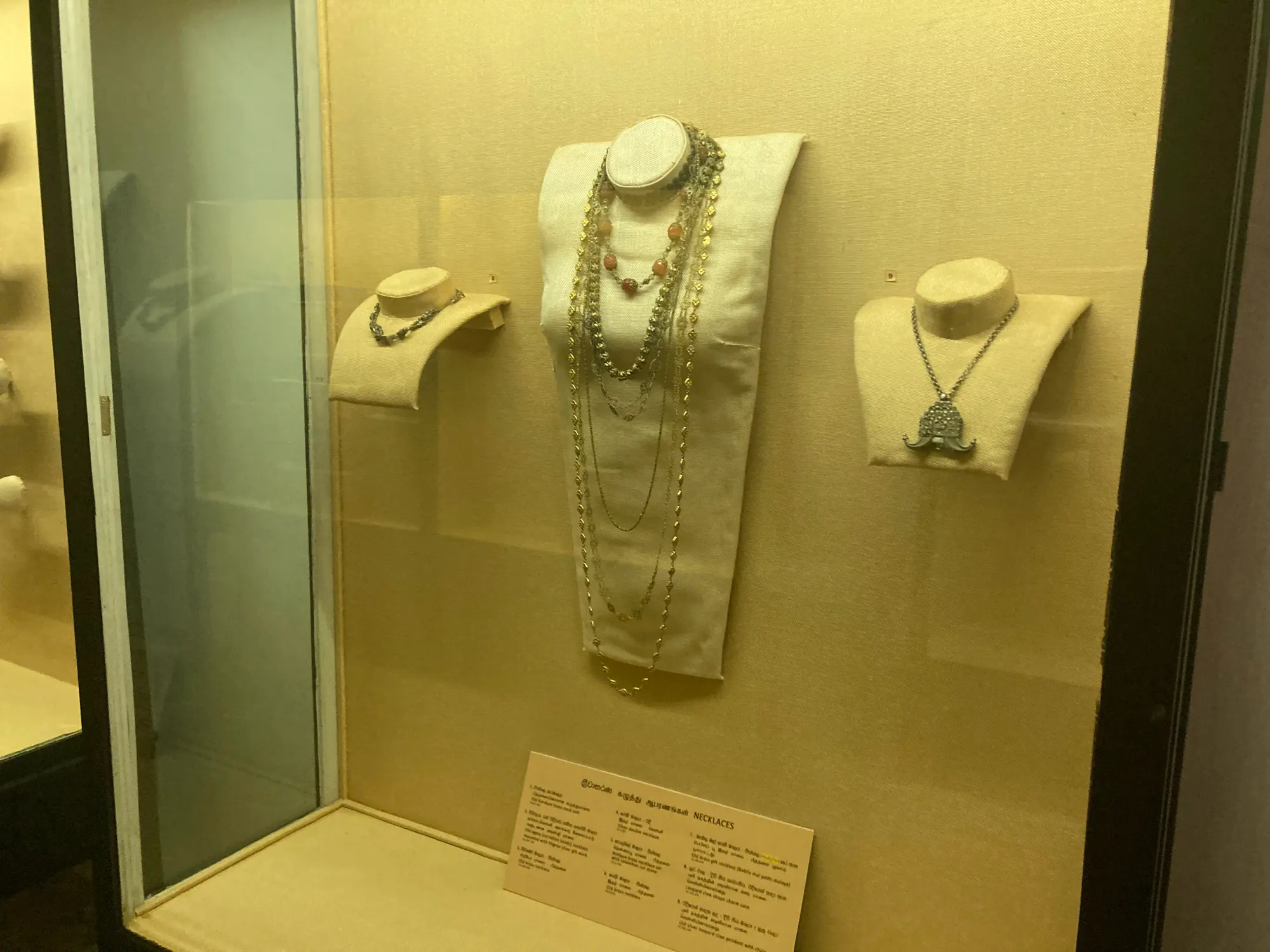
Hall 4 : Kitchen and Culinary Tools
In this gallery, you will find many different types of kitchen utensils. These include an array of ceramic and pottery items, knives and other utensils as well as kitchen tools made from coconut shells. Some of these items date back several centuries. From cooking vessels to decorative pieces, the range is extensive. Information about the materials used, the methods of production, and the regions where these items were made is provided to offer a complete understanding of Kandyan ceramic arts.
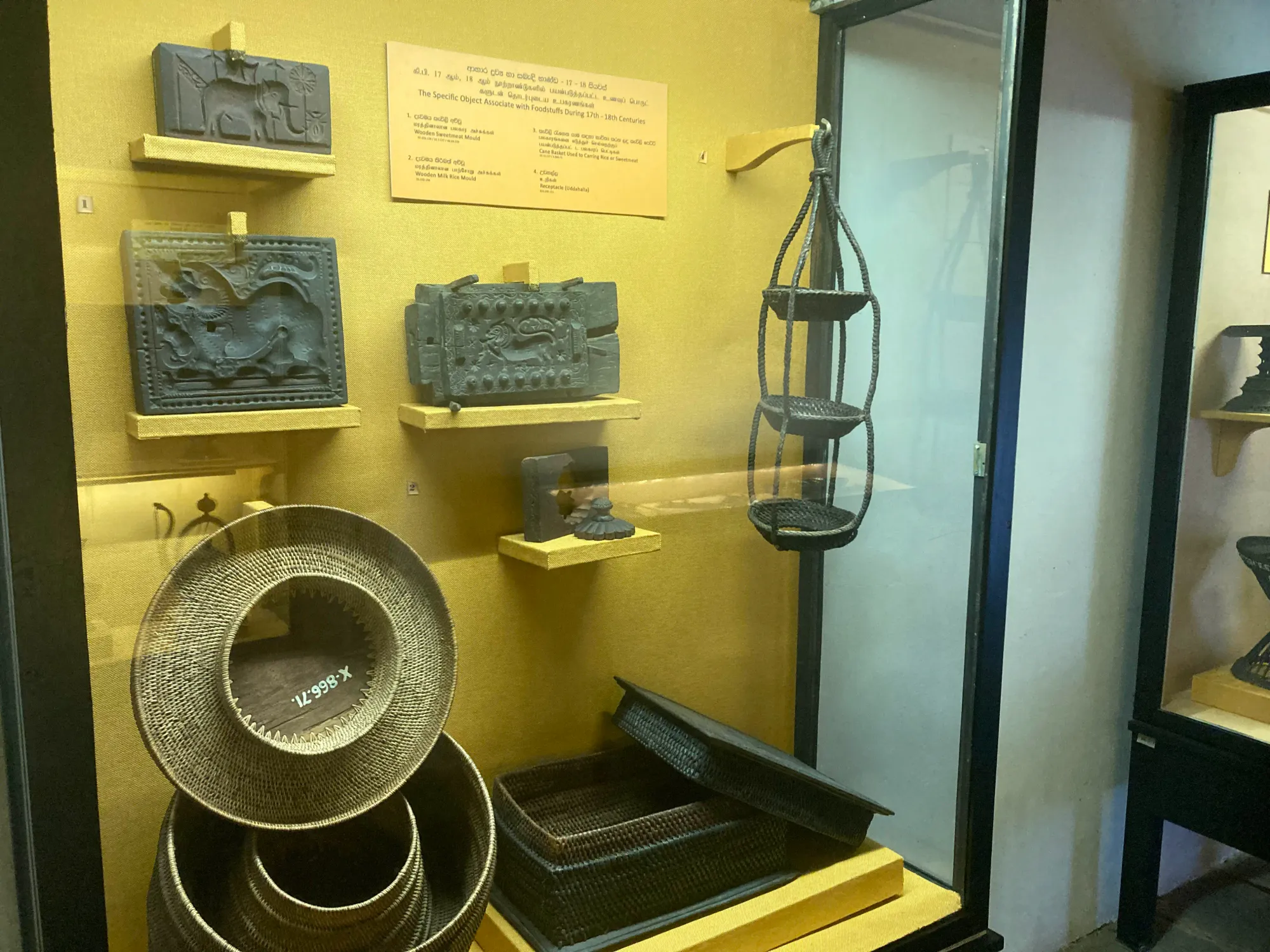
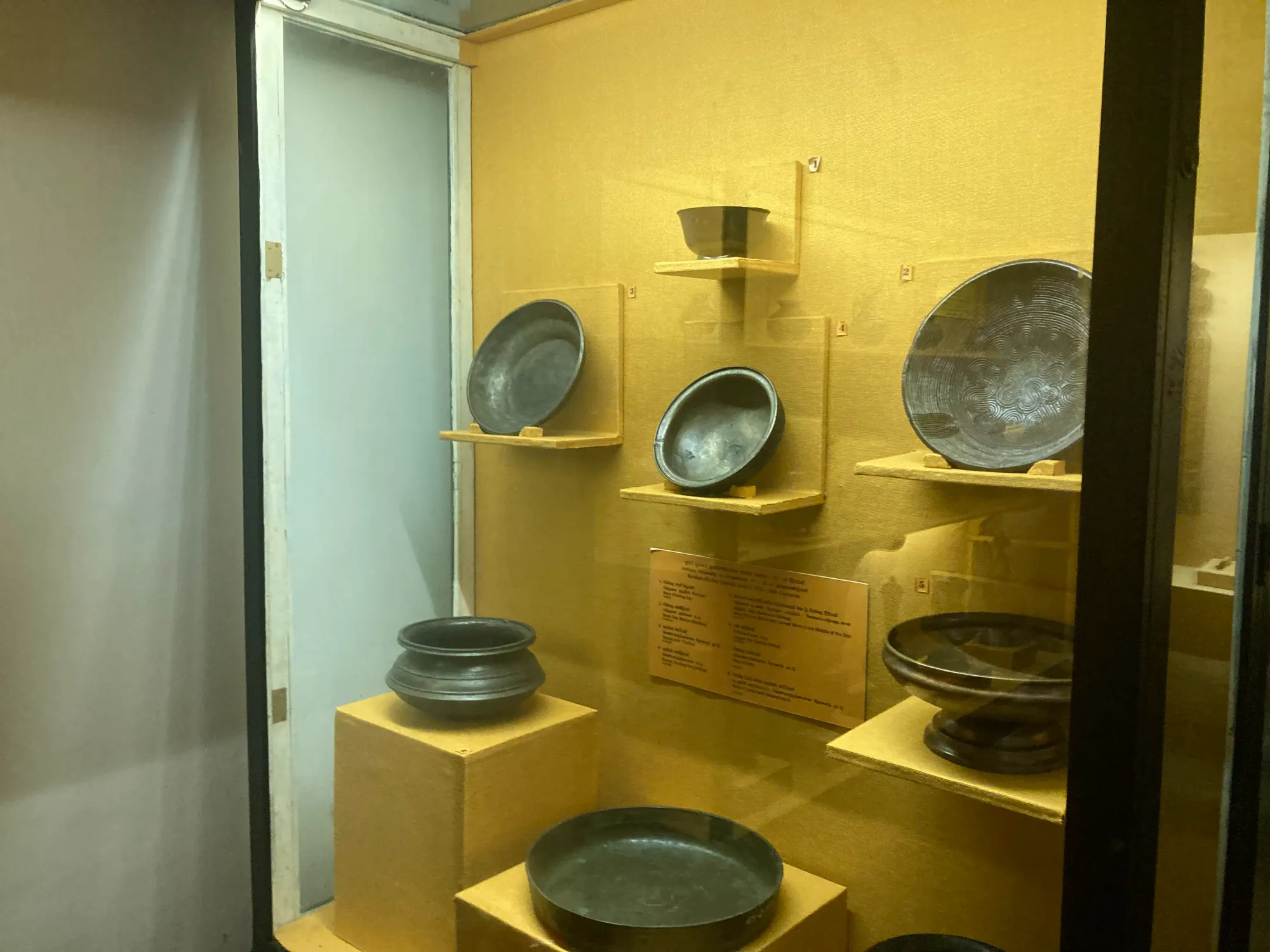
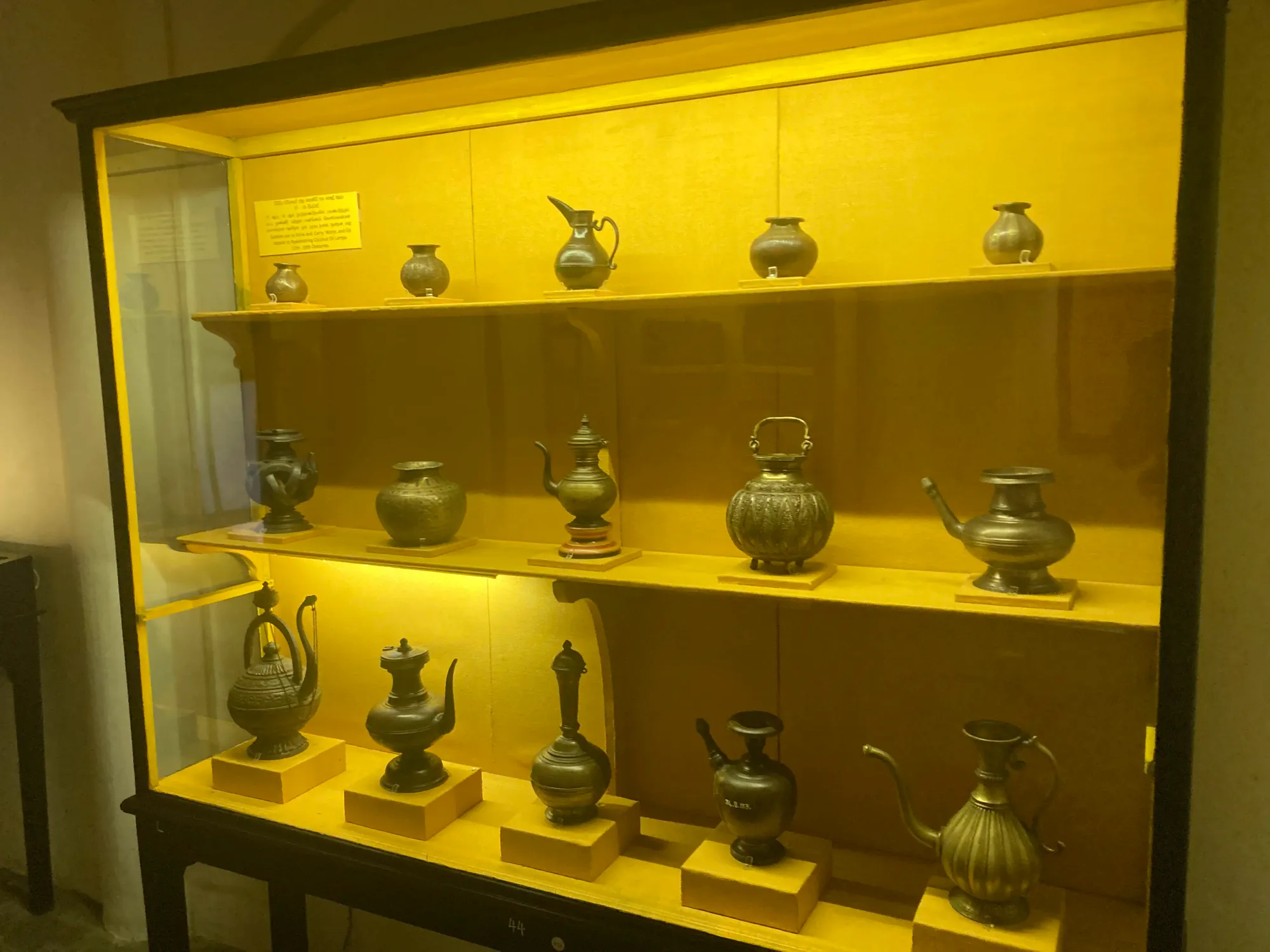
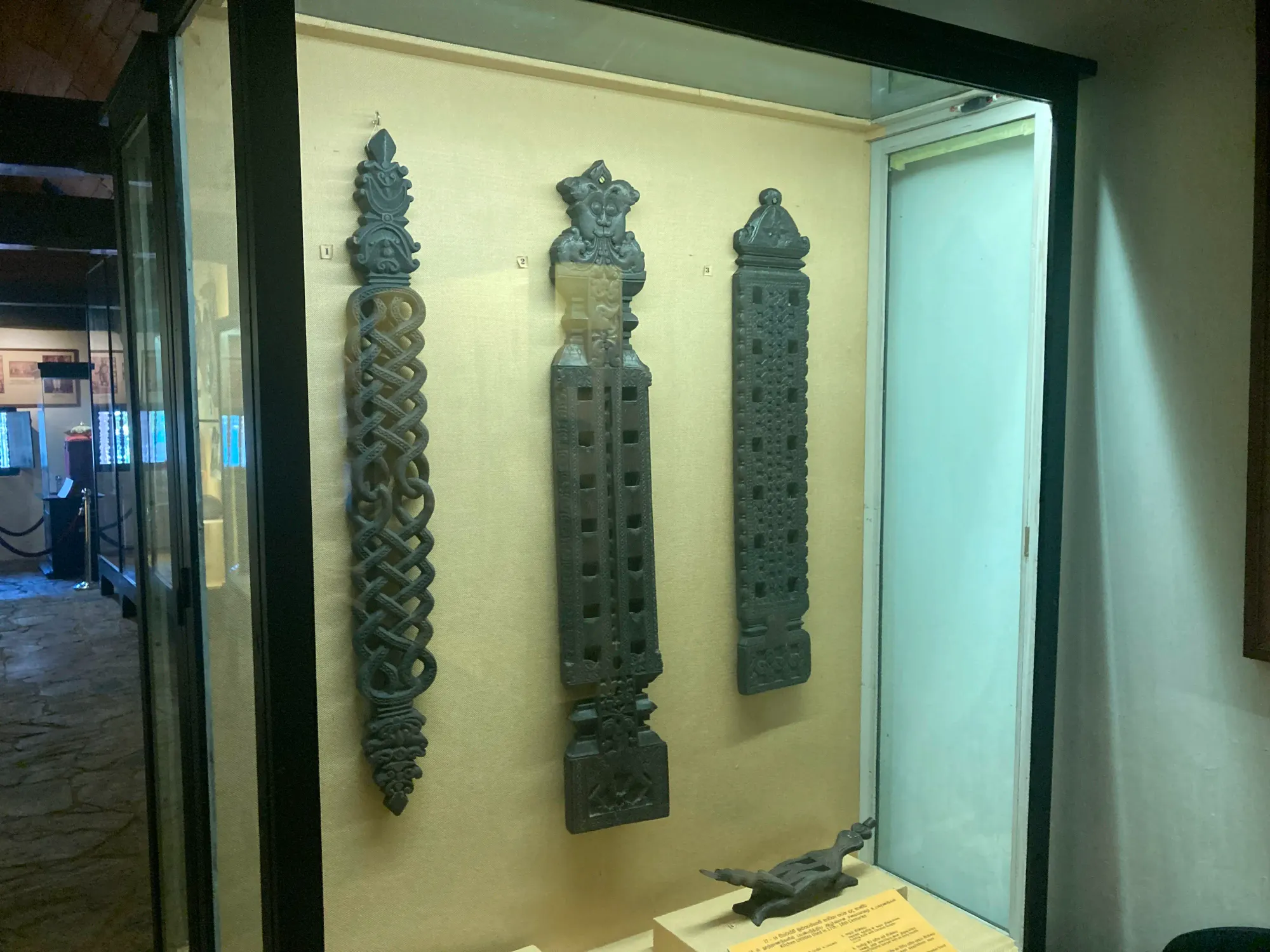
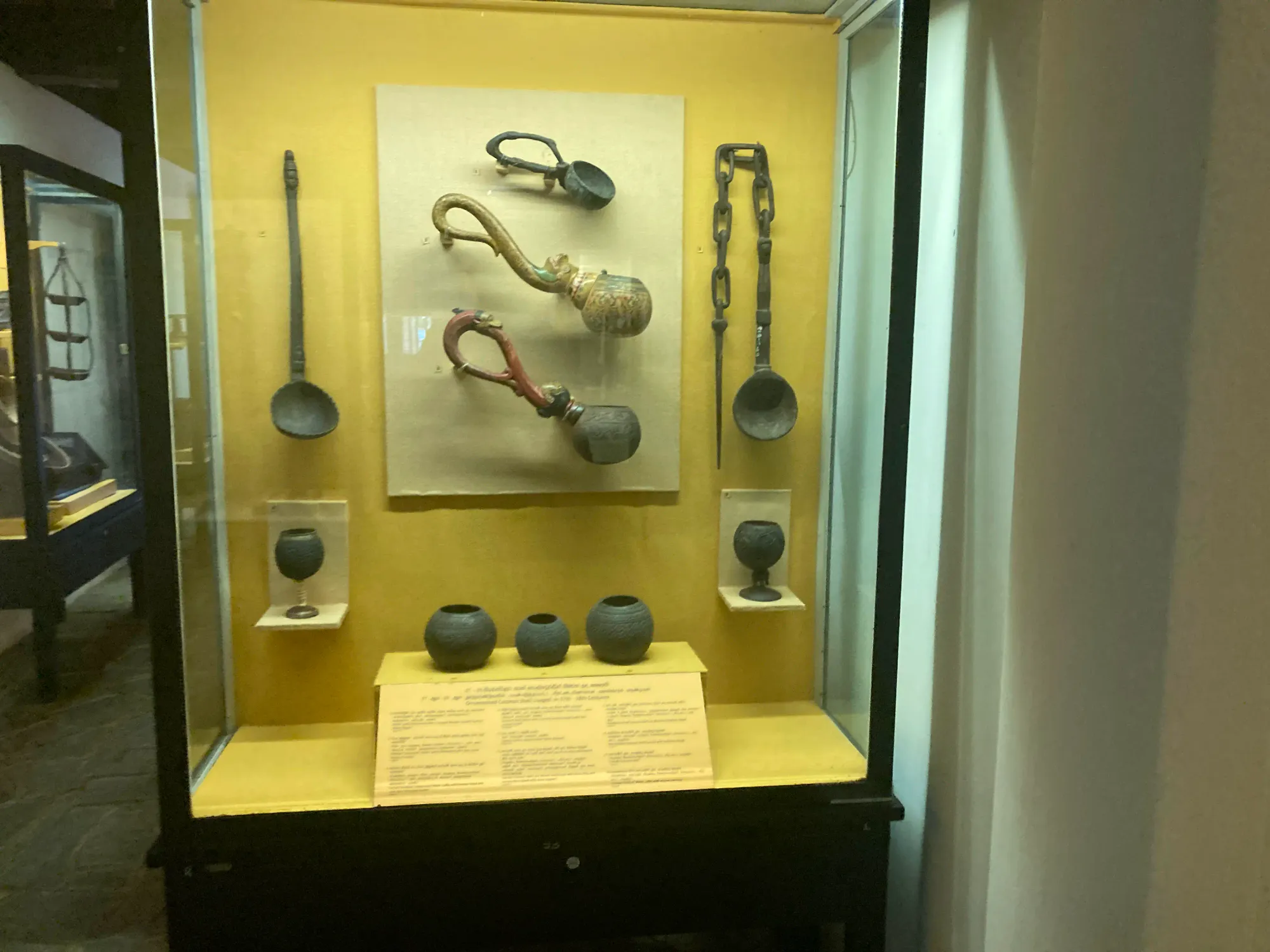
Hall 5 : Weapons Gallery
This section is a highlight for many visitors interested in military history. It features a range of weapons, such as swords, daggers, and shields and even cannons used during the Kandyan period. Each weapon has its background explained, from its use in battle to its significance in royal ceremonies. The craftsmanship on the hilts and the engravings on the blades are particularly noteworthy. You can also see ancient devices of punishment such as the 'Dandukanda' which gives a deeper understanding of the era's societal norms and governance.
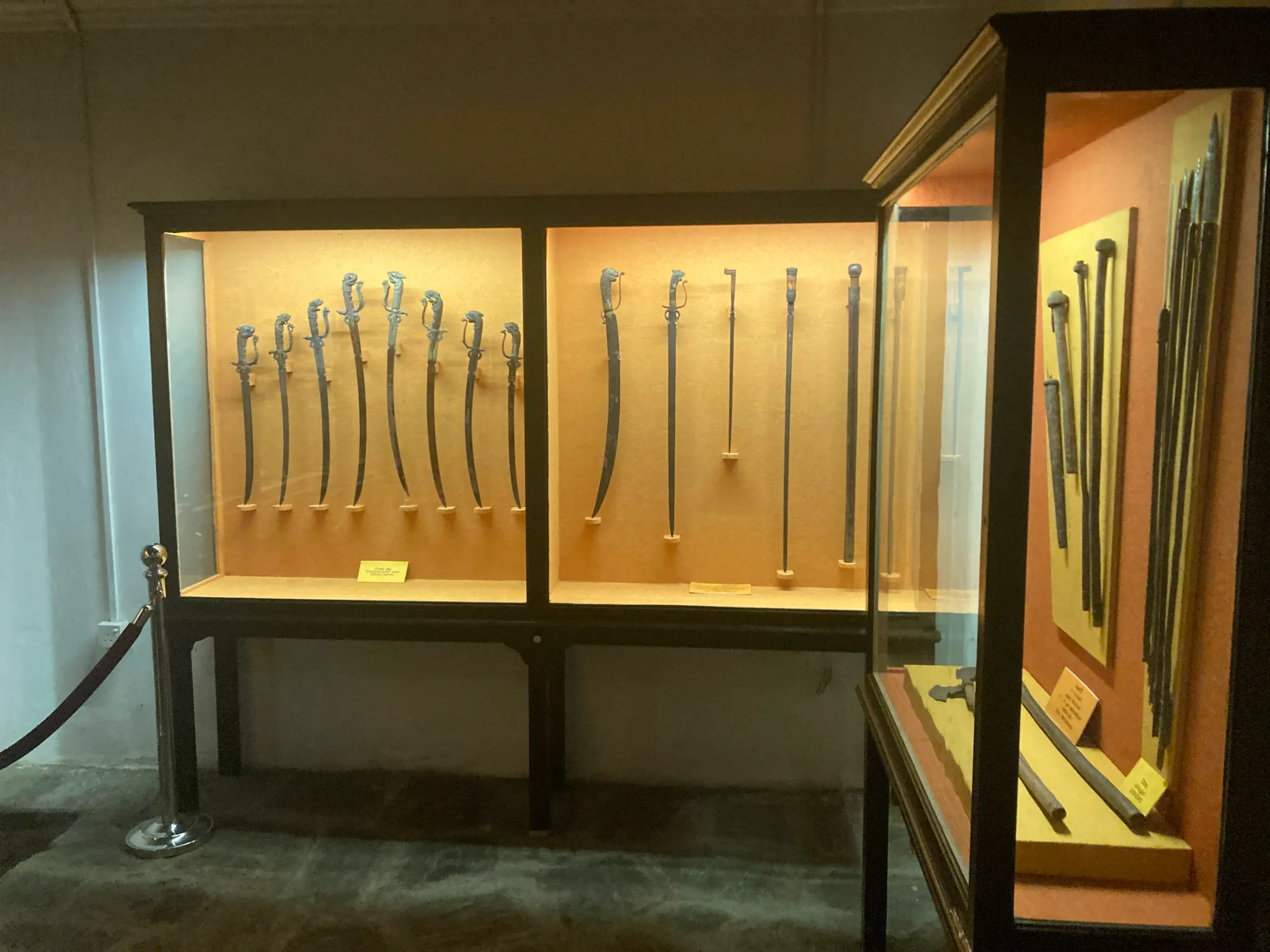
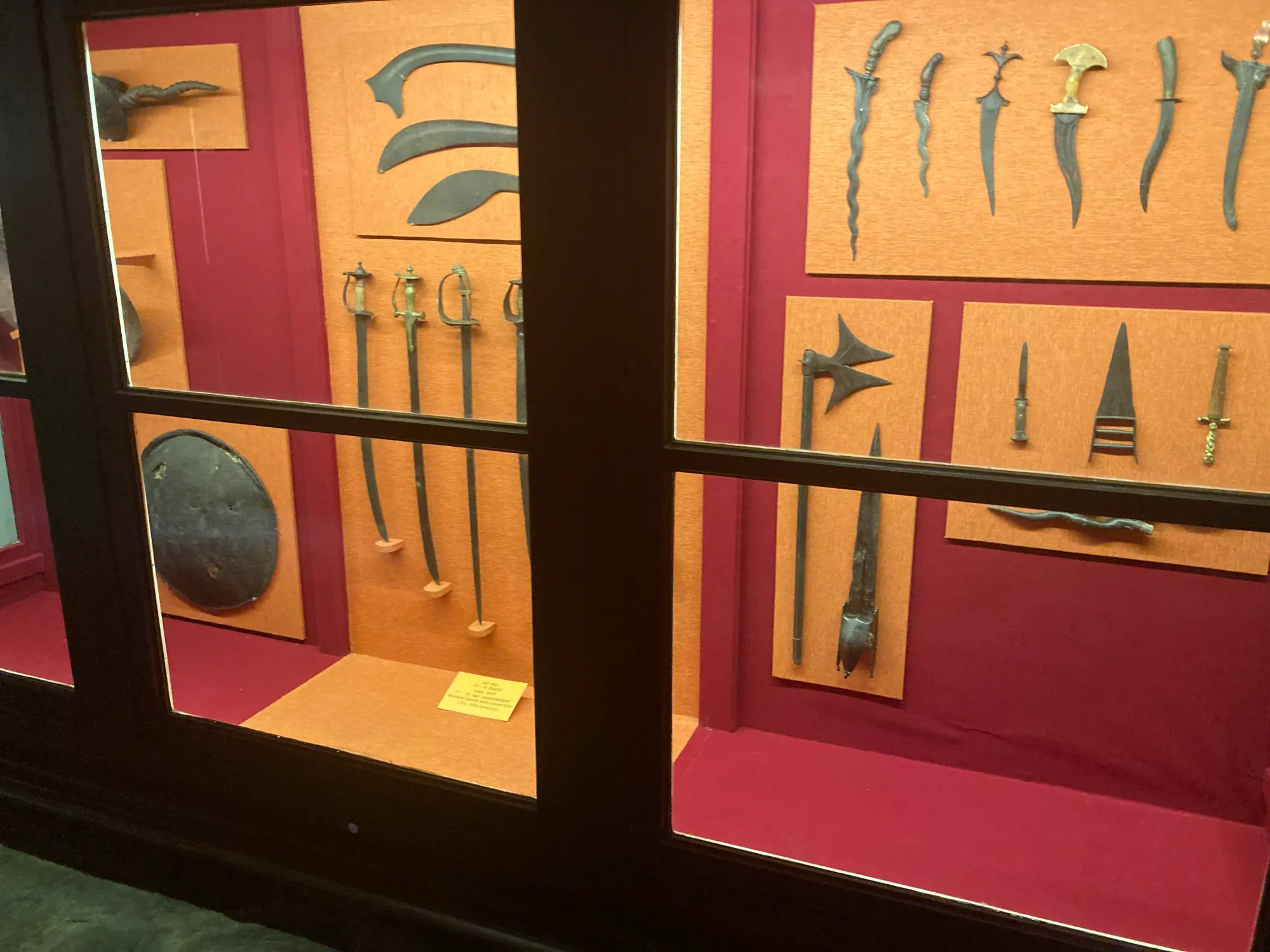
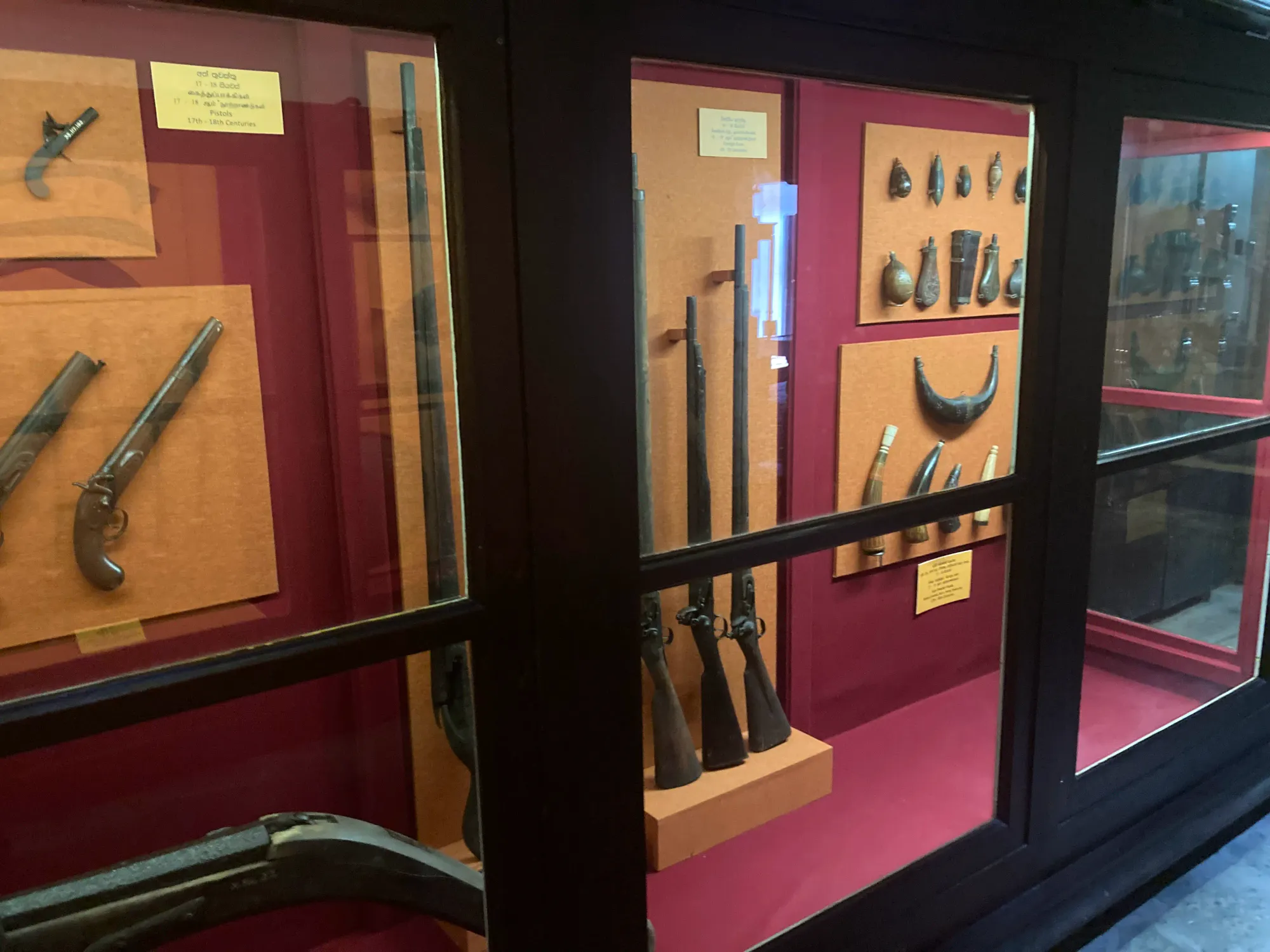
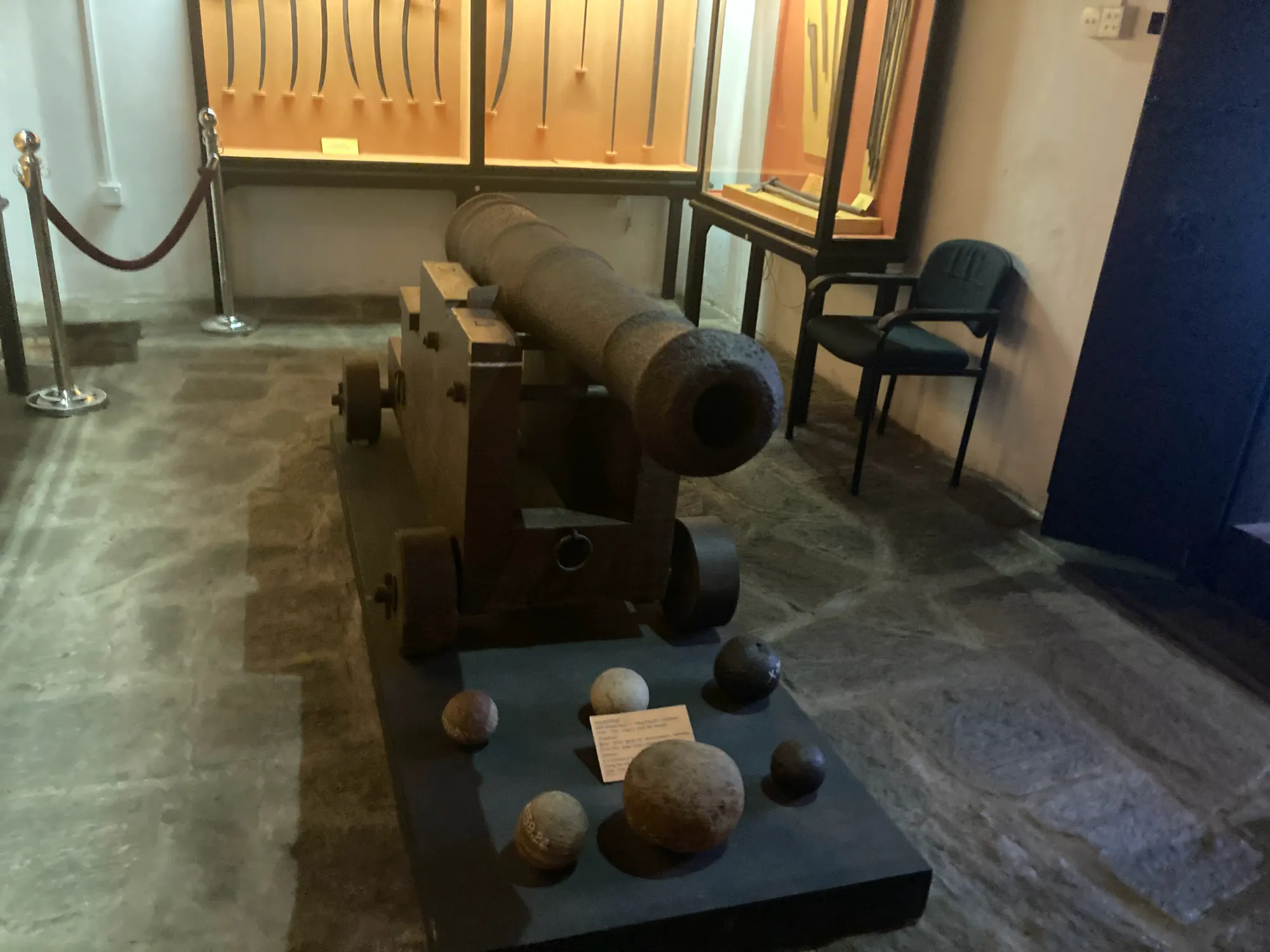
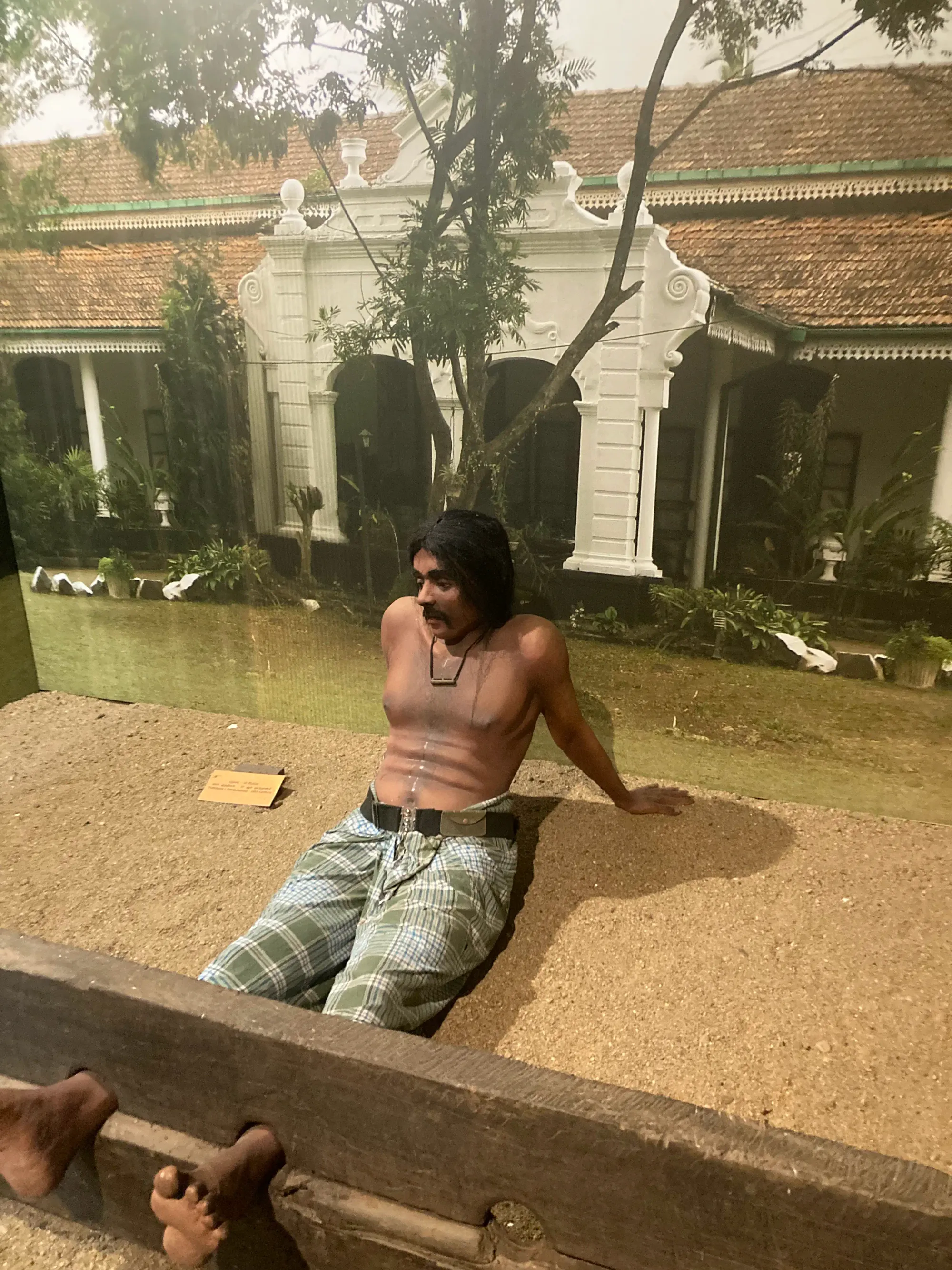
Hall 6 : Industries
Explore the diverse array of Kandyan craftsmanship in this hall, highlighting the region's rich heritage in woodwork, metalwork, pottery, agriculture, and the intricate lacquer industry. Here, visitors are invited to delve into the detailed array of tools that were foundational to each trade, offering a window into the daily lives of the Kandyan people. Among the intriguing items on display are ropes specifically designed for noosing elephants and cattle.
Additionally, the hall features several litters known in Sinhalese as 'Dola', elegantly crafted vehicles used for transportation of royalty and prominent individuals.
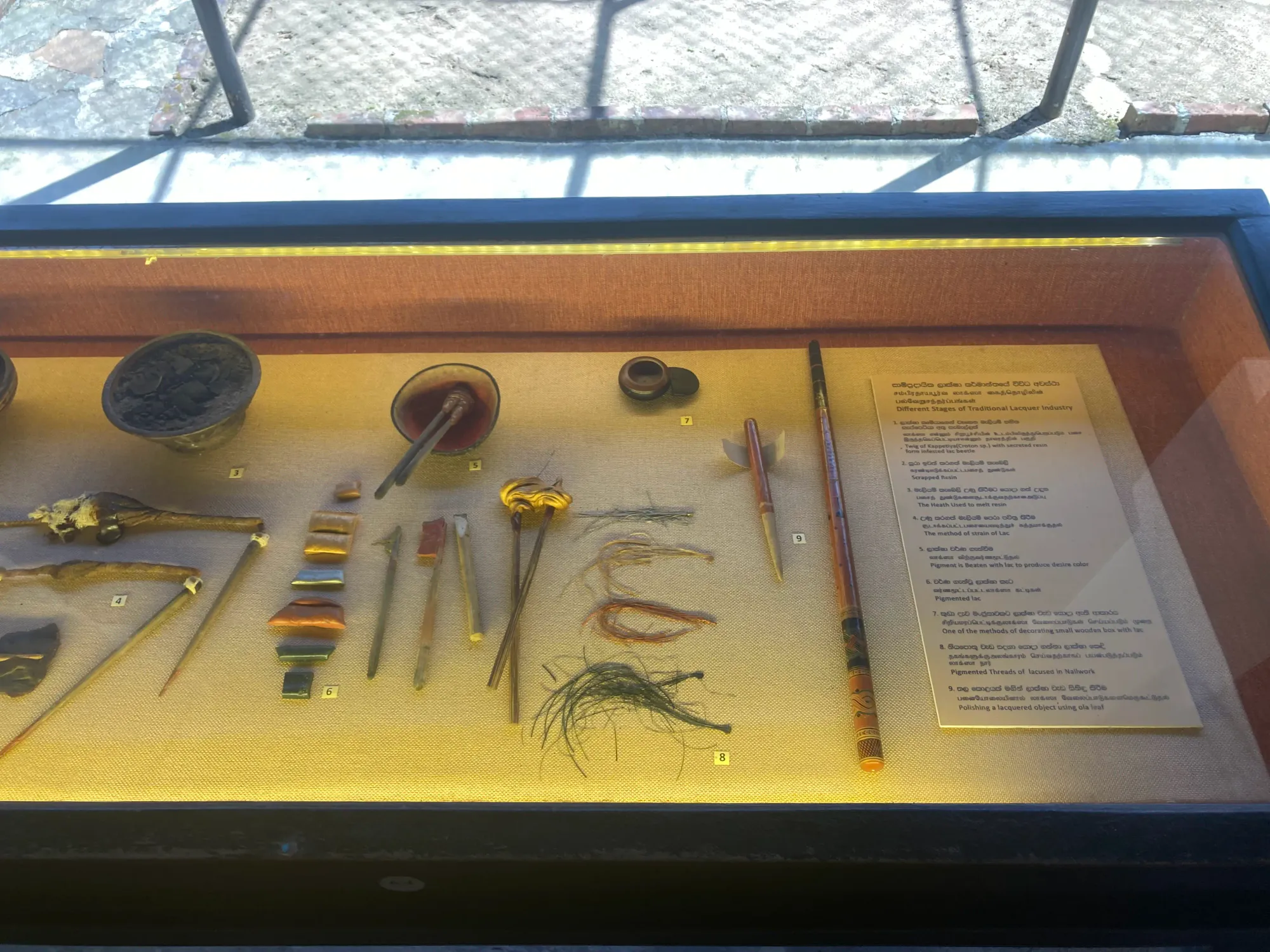
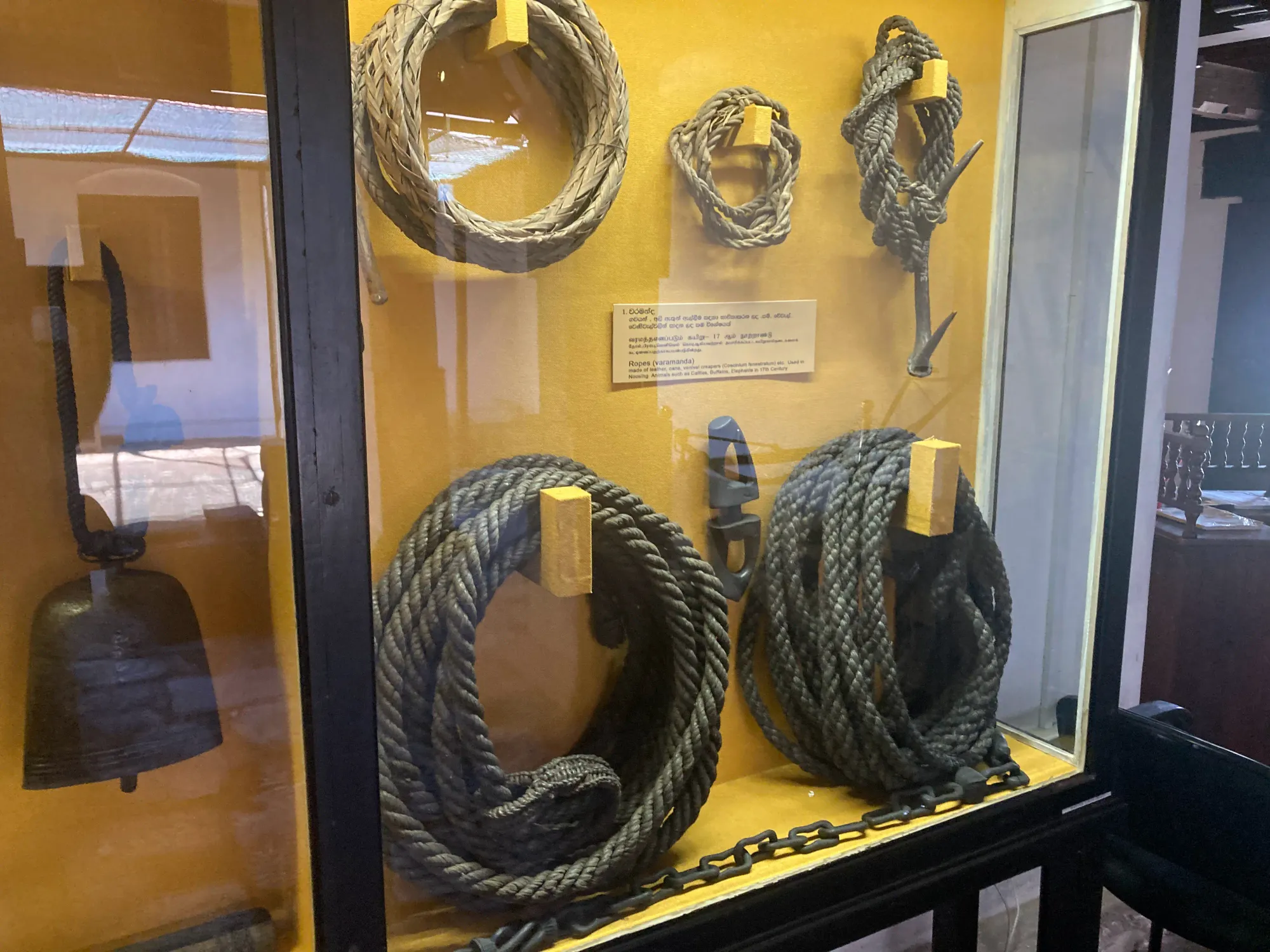
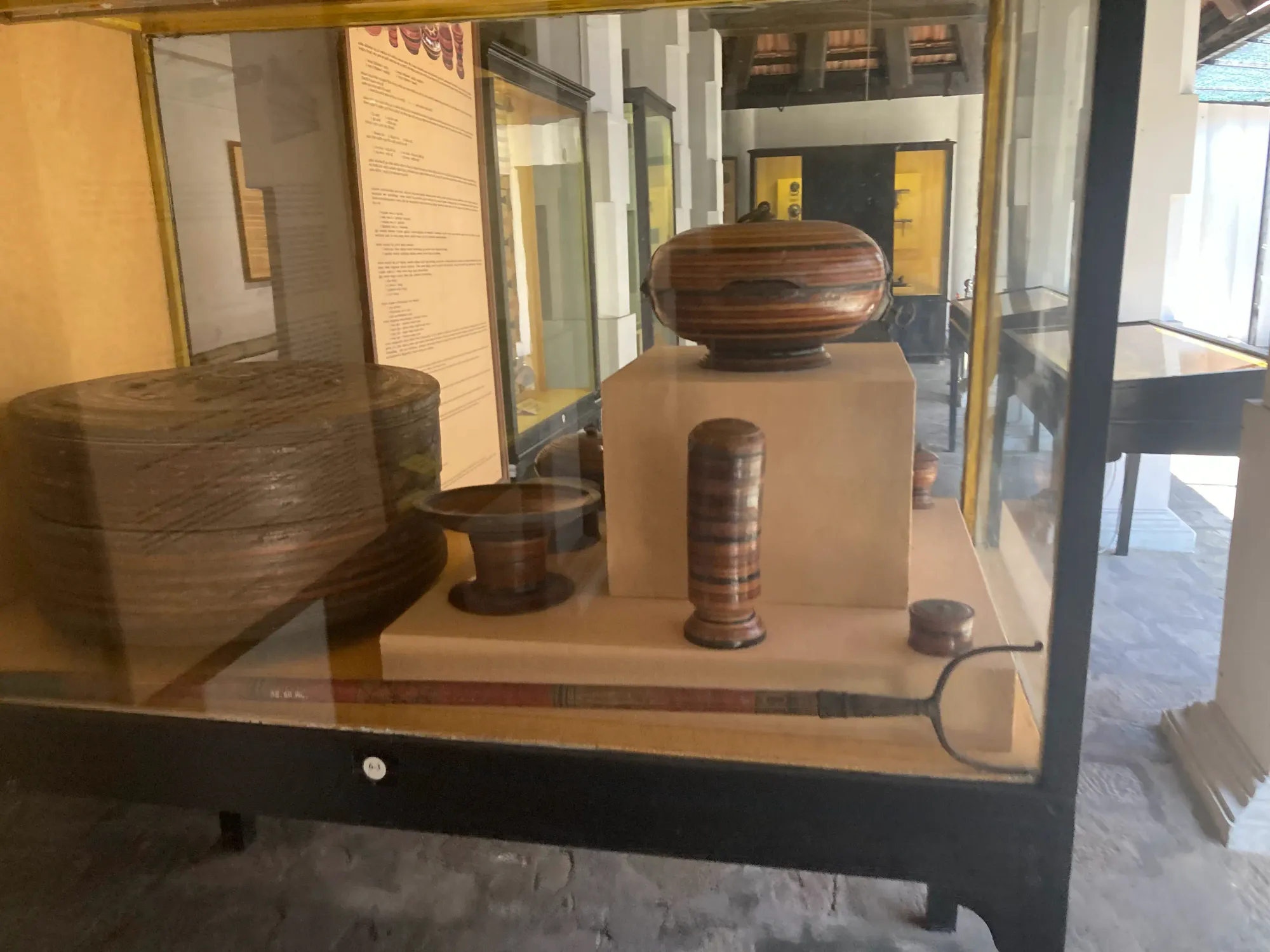
Hall 7 : Artifacts and Sculptures
This hall is particularly notable for its extensive collection of ivory artifacts, alongside several Buddha statues and sculptures, showcasing the artistic mastery and spiritual depth of the era. The ivory pieces range from intricately carved ceremonial items to jewelry and everyday utensils, highlighting both the aesthetic beauty and the functional aspects of these artifacts.
The Buddha statues and sculptures, each with its unique posture and expression, offer a serene glimpse into the spiritual practices and beliefs. These items demonstrate the skilled craftsmanship of the artisans and provide insights into the cultural and religious life of the people.
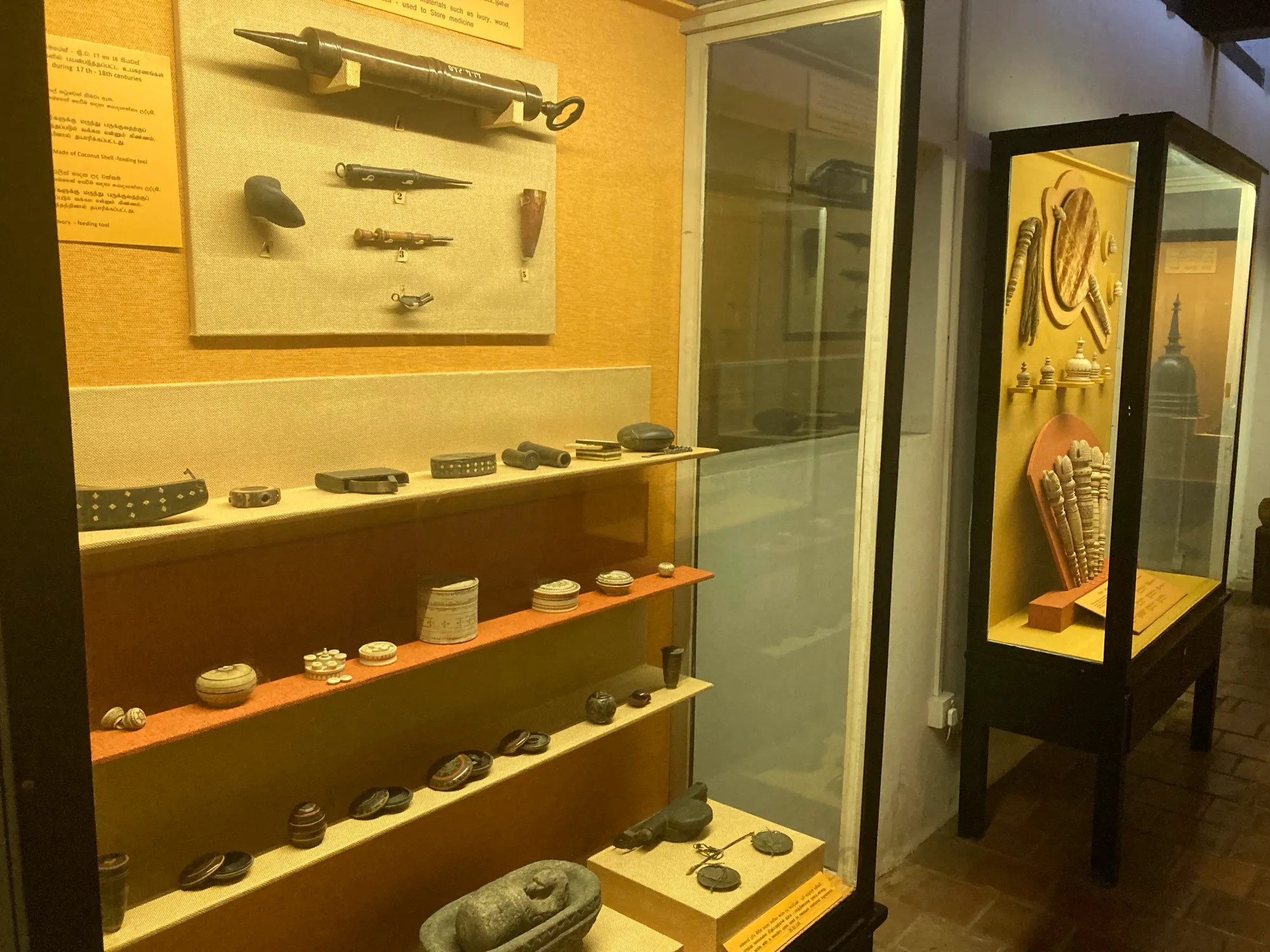
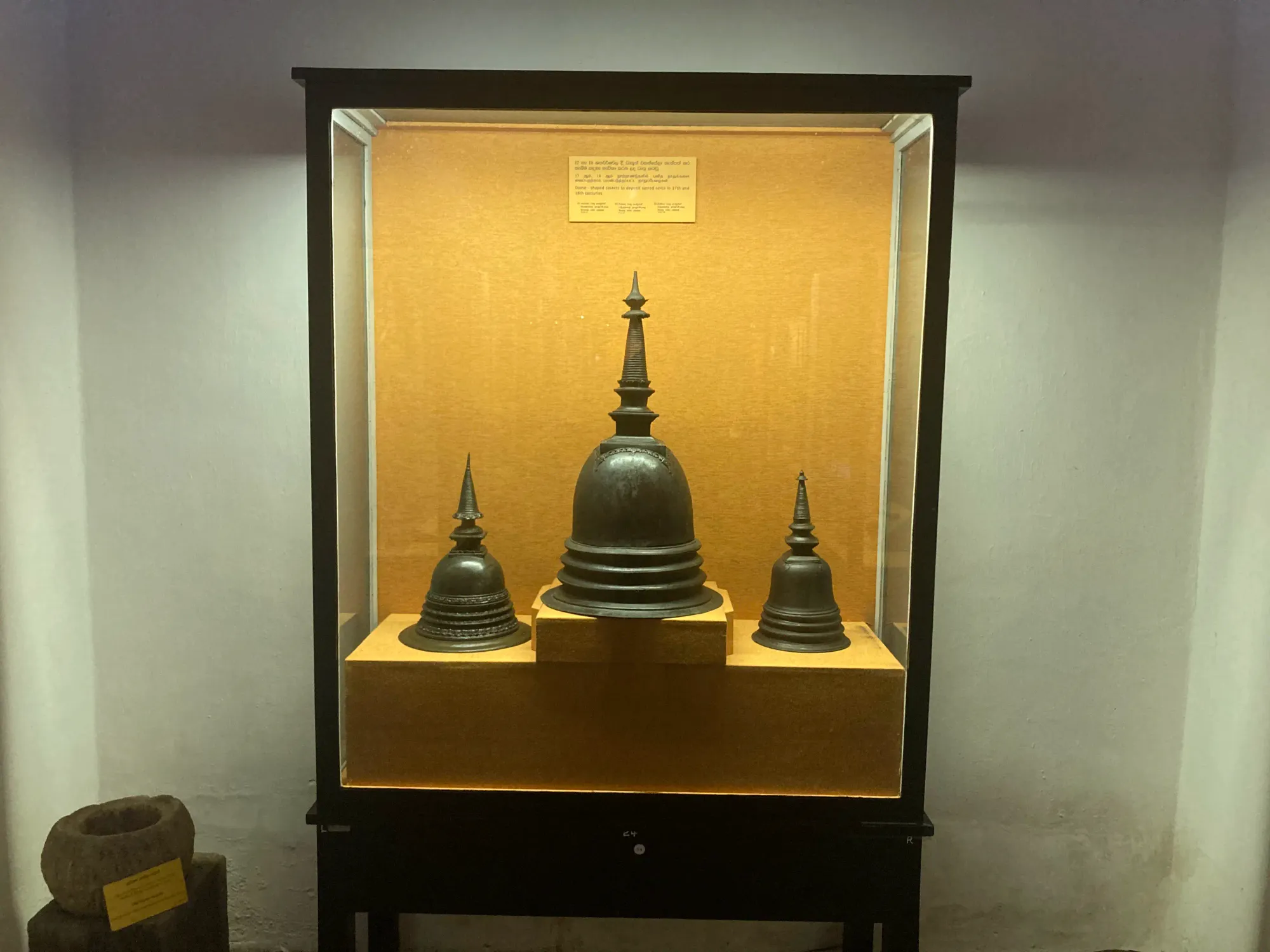
Hall 8 : 'Pethikada' and Coins
This unique hall delves into the intriguing world of 'Pethikada'—traditional wooden planks adorned with vibrant paintings, often depicting scenes from folklore, historical events, or daily life. These artifacts offer a fascinating glimpse into the storytelling and artistic expression of the time.
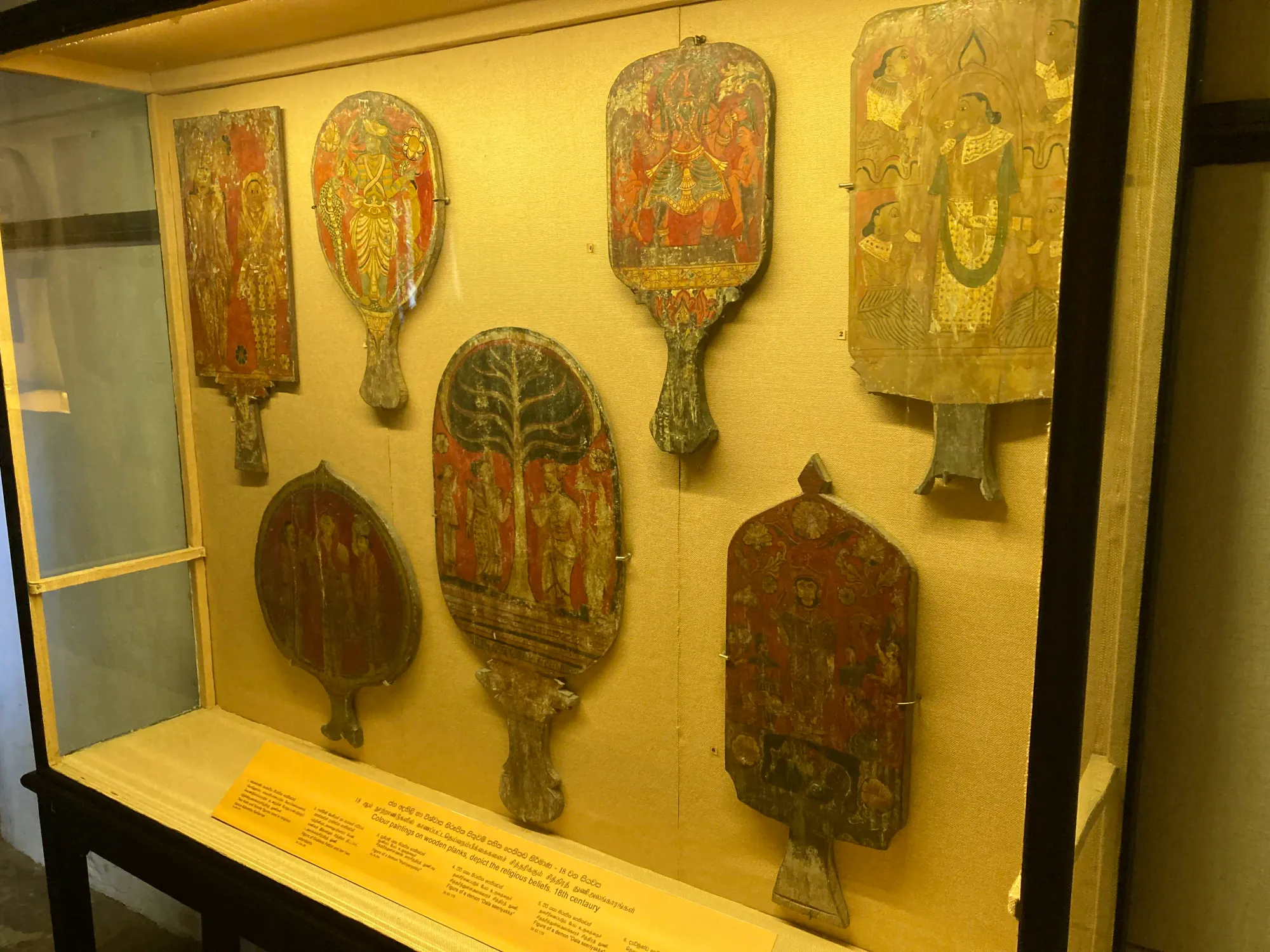
Alongside these cultural treasures, the hall features an extensive collection of currency, tracing the evolution of money in the region. The hall features many different types of coins that were used throughout the history of Sri Lanka. From the very first coin used during the time of the Anuradhapura Kingdom to the last coin used in the Kandyan era, and even the currency notes printed under British rule can be seen in this hall.
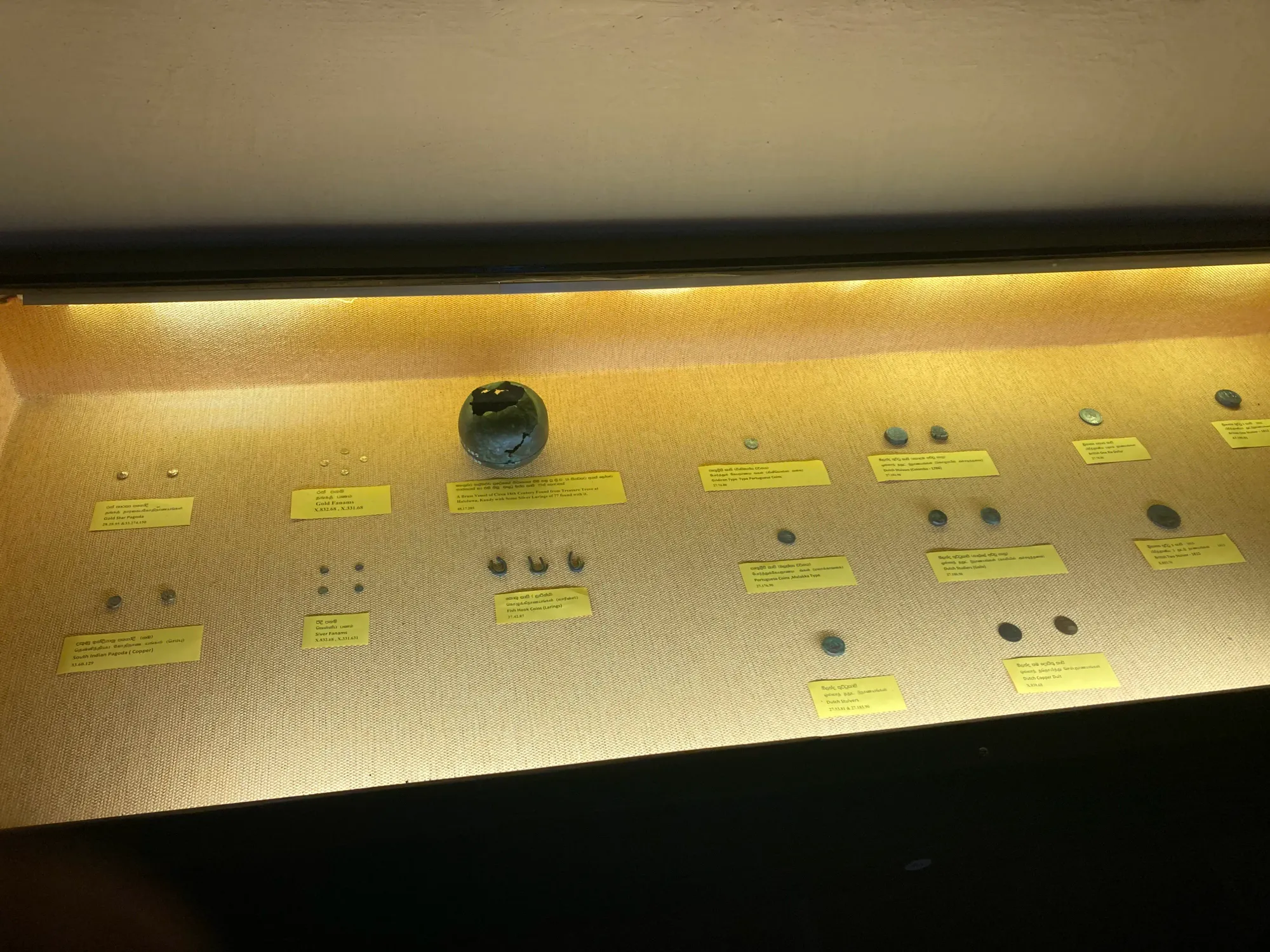
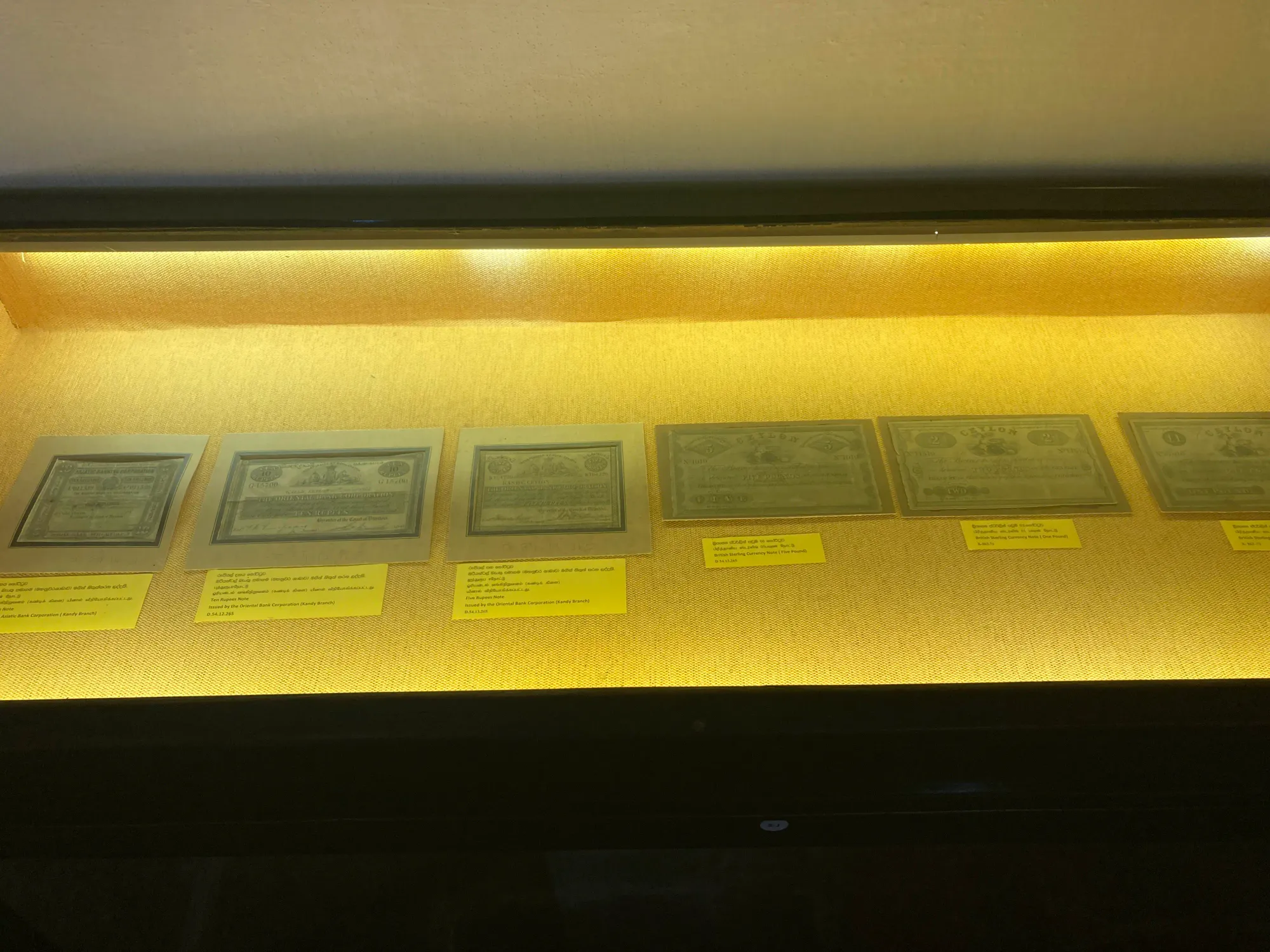
Entry Fees and Timings
The Kandy National Museum is open from Tuesday to Saturday, and the timings are from 9:00 AM to 5:00 PM. The museum is closed on public holidays. The entry fees are as follows:
- Local Adults: 100 LKR
- Local Children: 50 LKR
- Foreign Adults: 600 LKR
- Foreign Children: 400 LKR
Location and How to Get There
The Kandy National Museum is located within the city limits of Kandy on the Kande Vihara Road. If you're already in the city, you can easily walk to the museum from many central hotels and guesthouses. You can also take a tuk-tuk, which is a quick and commonly used form of transport in Kandy.
The Kandy National Museum is situated near the Temple of the Tooth Relic and the Kandy Lake. If you are visiting the temple, it's just a brief walk to the museum.
Best Time to Visit
The best time to visit the National Museum of Kandy is from December to April. The weather during these months is dry and suitable for outdoor activities. It's advisable to visit in the morning when it's less crowded.
Tips and Advice
- Photography Guidelines: Photography is allowed inside the museum, but make sure to turn off the flash to preserve the integrity of the artifacts.
- Videography Restrictions: You cannot record videos inside the Museum without special permissions.
- Time Allocation: Plan to spend around 1-2 hours to thoroughly explore all the galleries and exhibits.
- Guided Tours: For a better understanding of the exhibits, consider going for a guided tour.
- Language: Placards and descriptions are in both English and Sinhalese, making it easier for international visitors.
- Dress Code: Dress modestly, as the museum is a cultural institution, and situated right next to the Temple of the Tooth Relic. Avoid wearing sleeveless tops and short skirts or shorts.
- Payments: The entry fee counter accepts cash only, so ensure you carry sufficient local currency for tickets.
- Restrooms: Public restrooms are available within the premises.
- Crowds: The museum is less crowded during weekday mornings, offering a more peaceful experience.
Nearby Attractions
- Temple of the Tooth: This Buddhist temple is one of the most important religious sites in Sri Lanka. It is famous for housing the tooth relic of Buddha and is located just a few kilometers from the museum.
- Kandy Lake: Situated in the heart of the city, Kandy Lake is ideal for a peaceful walk or a boat ride.
- Royal Botanical Gardens: Located in Peradeniya, about 5.5 kilometers from the museum, the Royal Botanical Gardens showcase a wide variety of flora. It's a perfect spot for plant lovers and those looking for a peaceful escape from the city.
- Wales Park: Offering a high vantage point, Wales Park provides impressive views of Kandy City and the surrounding hills. The park is a short drive from the museum and is an excellent spot for photography and relaxation.
- Udawattekele Sanctuary: This nature reserve is ideal for hiking and bird-watching. Located close to the museum, it offers trails through dense forests, providing a glimpse of local wildlife and flora.
Visiting the National Museum of Kandy provides you with a valuable look into Sri Lanka's Kandyan era. This isn't just a walk through history; it's a way to better understand the culture, art, and values that have shaped this region. So, if you are traveling in Kandy, make sure you spend a few hours exploring this fascinating museum.
